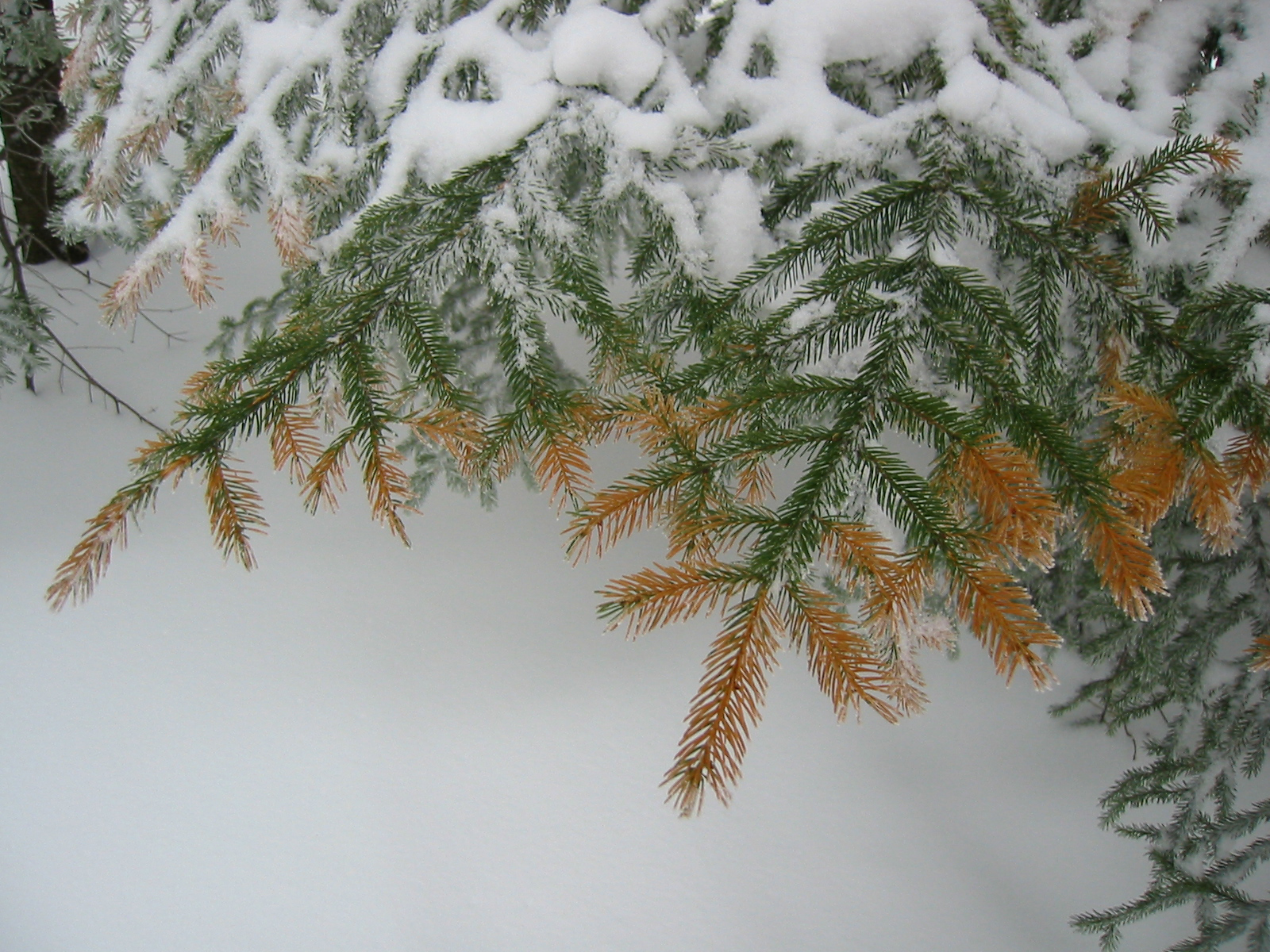Winter Injury, Carbon Loss, but Surprising Growth Resurgence in Red Spruce
May. 18th 2015Red spruce winter injury, associated with red spruce decline, first recognized in the 1970s and 1980s in the Northeast, results from needle freezing during extreme cold/thaw events. Scientists have linked acid deposition-induced depletion of calcium from forest soils to a reduction in the cold tolerance of red spruce needles. Winter injury causes needle reddening and death, crown thinning, and negative carbon balances that can lead to tree decline and eventual death.
In 2003, a severe region-wide thaw/freeze event damaged over 90% of red spruce in the Northeast. In 2010, researchers from the University of Vermont and the USDA Forest Service Northern Research Station assessed the impacts of the 2003 winter injury event on long-term growth and carbon storage in red spruce trees on 30 forest plots throughout Vermont and into Massachusetts and New Hampshire.
Alexandra Kosiba, Paul Schaberg, Gary Hawley, and Christopher Hansen collected stem cores from dominant red spruce trees in each plot. From the cores, the researchers measured annual tree diameter growth and, in combination with tree growth equations and USDA Forest Service Forest Inventory and Analysis (FIA) data, estimated impacts on aboveground carbon storage for red spruce trees across the region.
They observed that needle loss from winter injury reduced red spruce growth for three or more years following the 2003 winter injury event. During those three years, although reduction in growth was not extensive for any one tree, cumulative loss for red spruce trees across the region was substantial – about 673,000 metric tons of carbon (roughly equivalent to burning 280 million gallons of gasoline).
The research team also made a startling discovery. Especially at mid-elevations (2500-3000 feet), red spruce trees injured in 2003 had experienced a surprising growth rebound since 2007. For trees in this study, yearly growth is now at the highest level in the last 100 years, nearly twice the average growth over the last century.
This growth resurgence is good news for red spruce, a species long known for growth declines and tree mortality associated with acid rain. The new question for researchers and forest managers is WHY this growth surge is occurring. Is the resurgence of red spruce in part a result of reduced acid deposition? Are warmer fall, winter and spring temperatures benefitting this species that is known to be sensitive to cold-induced foliar injury? Are these or other factors interacting to help red spruce? New research is examining the possible causes for red spruce’s remarkable growth rebound.
 ecoNEWS VT
ecoNEWS VT